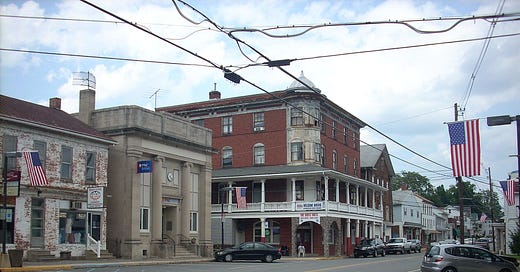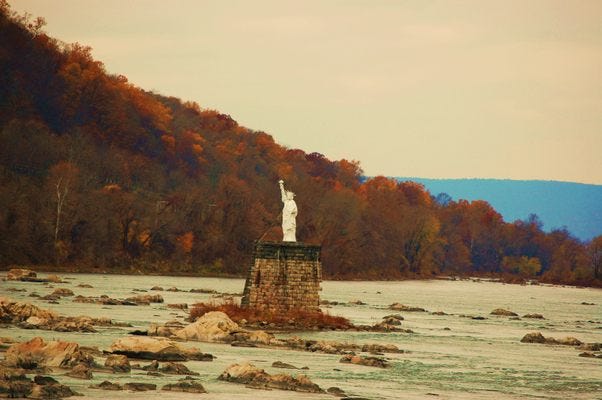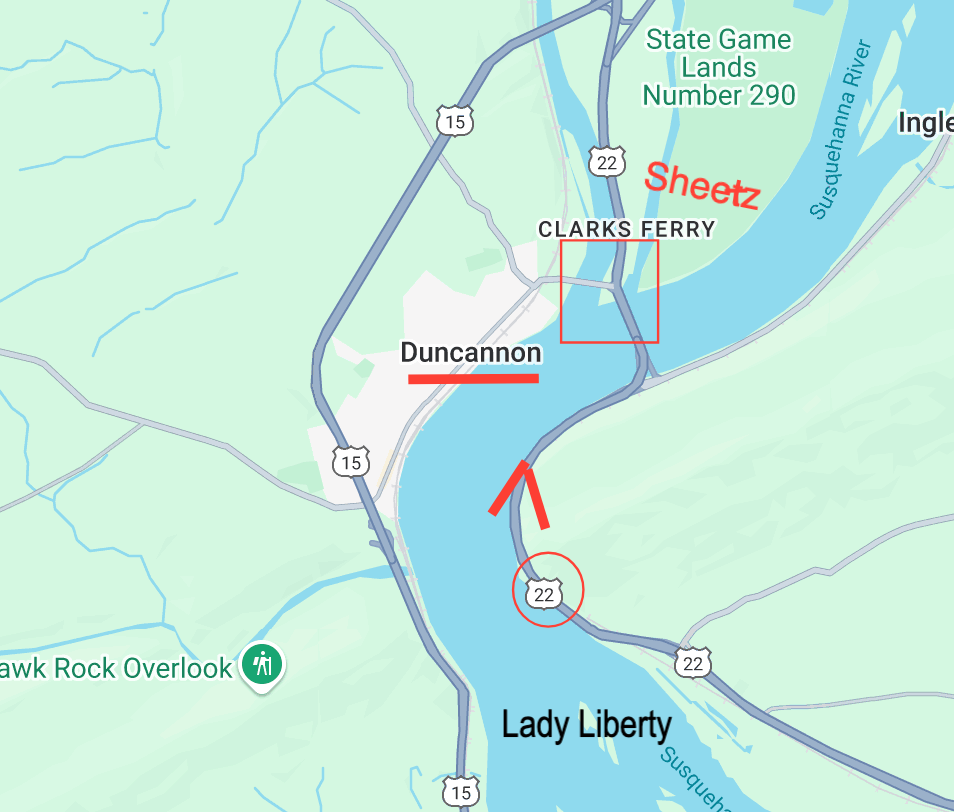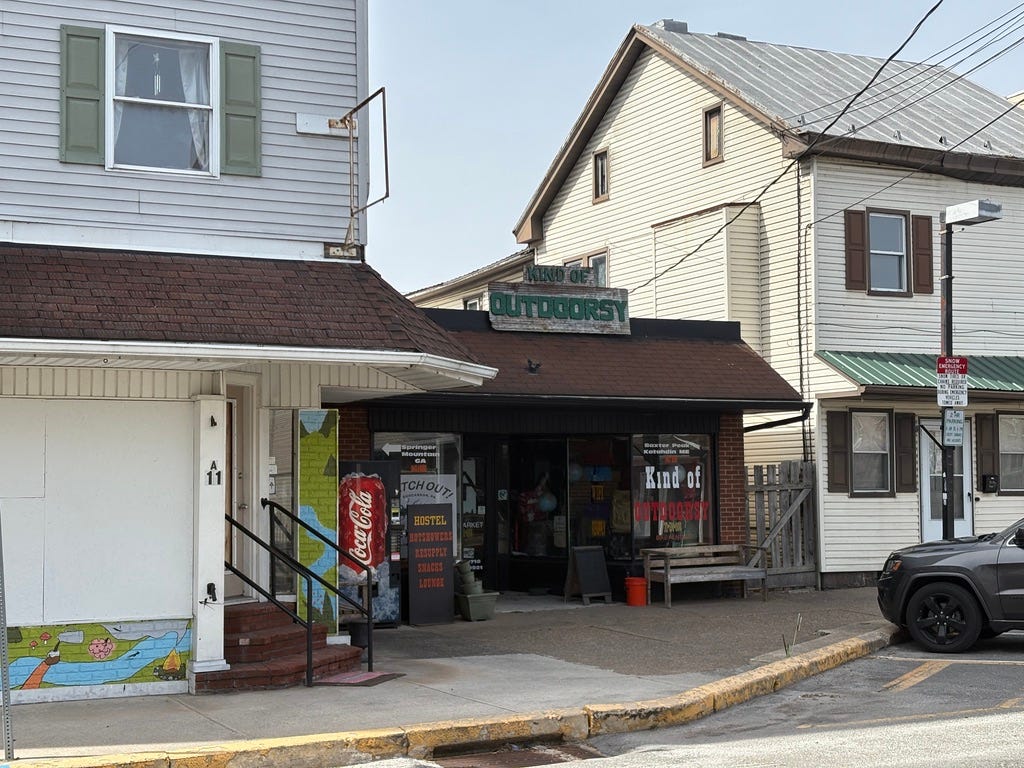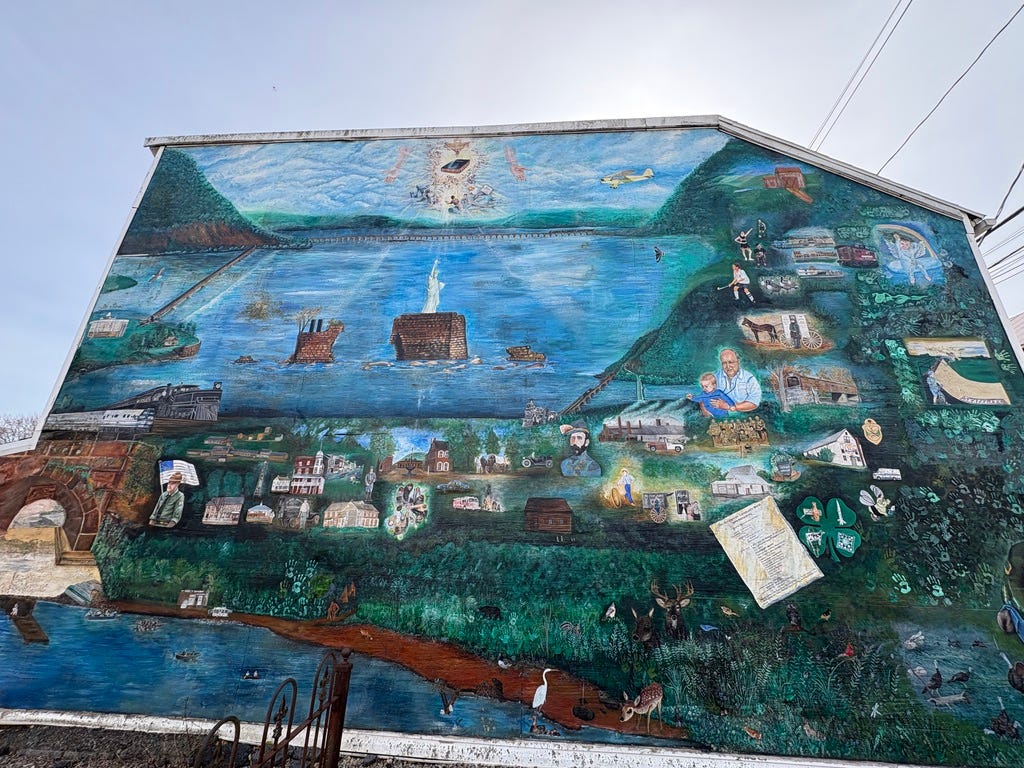No Warning: I'm Dropping In!
We all have our hobbies. Unlike most enthusiasts, though, I am not obsessive. I don’t stay in the deep end of the pool very long.
For instance, when I spy what looks to be an out-of-the-way town on my handy paper atlas (a gift from an understanding spouse), I try to imagine the geology, topography, culture, history, and basic lay of the land.
And then, if the route allows it, or I get the gumption, I perform a cannonball out of the maposphere and land with a splash to have a little look-see. It only takes me about an hour to get a strong feel for a place since I’m usually on foot.
I pitched such a Duncannon-ball a few weeks ago.
I’ve bypassed (quite literally) this town my entire life. It’s possible you have too if you’re a Pennsylvanian. If you’re not from central PA, first of all, I pity you. 🤓 Second, think of a highway near you, locate it on a map, and you’re bound to find your own by-passed town to explore.
From where I live in Lancaster, the northward route to places like Lewisburg and Williamsport involves skirting Harrisburg on Route 22/322 where it crosses the Susquehanna River just north of the Statue of Liberty. The replica in the middle of the river, that is.
Virtually all traffic continues past “the halfway Sheetz” to connect with Route 15. But the locals and intrepid explorers know that if you hang a left off the big bridge, you’ll cross a second bridge over the Juniata River where you’ll end up in Duncannon.
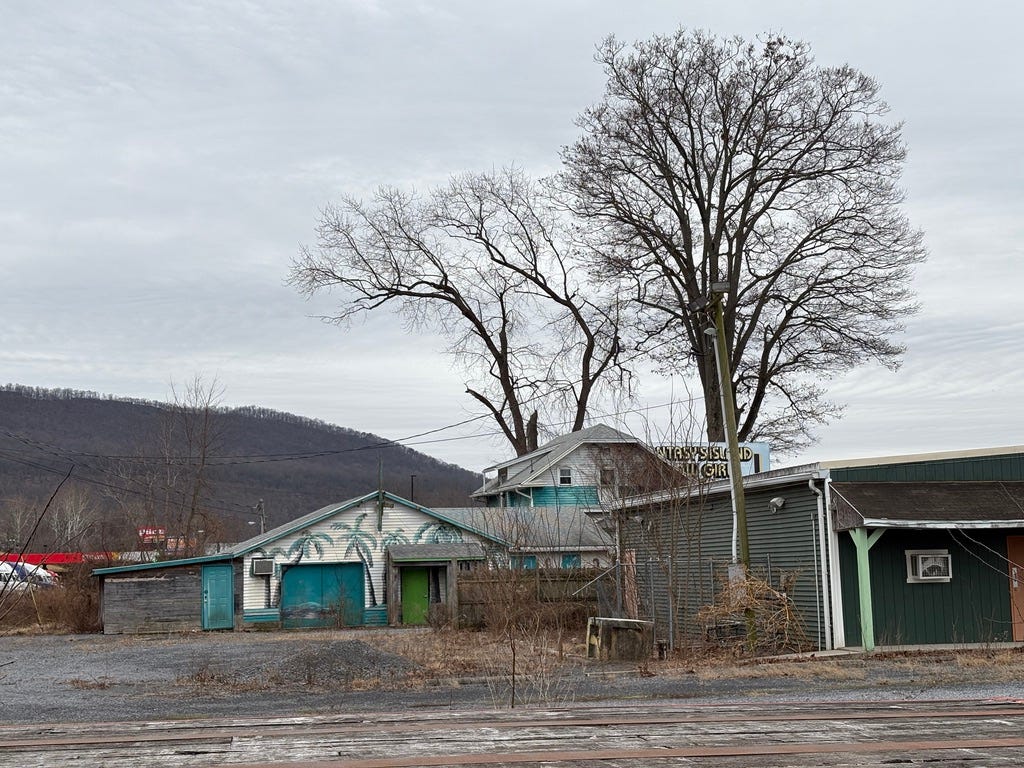
The Drop
It was chilly when I landed on Main Street in March. I parked the Subaru in what appeared to be the main intersection and noticed the dusty detritus of winter cinders at my feet. At the terminus of Main looking south I saw the bypass for 15 North which explains why little Tommy never saw the actual town, even back in the 70s.
I turned around and headed north and took in the town square anchored by The Doyle Hotel. An historic marker explained more of the town’s history as a crossroads in Perry County lying at the foot of a mountain with access to the river. It was the perfect place for a railroad, and it still is.
What was once the Pennsylvania Railroad Duncannon Depot is now an office building, and I was heartened to hear trains rumble through the town along the river despite its closure. Norfolk Southern and Amtrak frequent the rails, so if you’re nostalgic for train whistles as I sure am, D-town’s the place to visit. Or live.
I wager the living is cheap(er) than most places on the east coast.
Most businesses are mom-and-pop run, run-down, or shut down. Lindgren Craft Brewery operates out of an old bank, and that pretty much accounts for anything close to gentrification.
My dog Rue was with me, and I forgot her water dish, so I sheepishly looked in the window Kind of Outdoorsy, a small store and spied a woman readying her stock for the Appalachian Trail hikers whom she’d be catering to in the spring.
She offers six beds in a homespun hostel at the rear of her building. I could imagine weary and and gnat-infested through-hikers clomping down Main Street and finding an oasis of granola bars, fresh socks, and mattresses.
I wondered aloud about town regulations. I mean, I’d never seen a grass roots outfitter outfitted with a bunk house. She seemed confident in her compliance of local codes. I didn’t press the issue. She gave me a plastic container for Rue to drink out of.
We walked toward the river and discovered a stone archway at Water and Anne Streets that tunnels under two railroad beds. The water met our feet abruptly, offering an expansive view of one of the wider sections of the Susquehanna.
I could’ve sat there for hours in its peaceful always-there-and-flowing companionship.
The Art of the Trail
Over the years, locals with some civic pride and cultural imagination created more than just an historical marker. I was impressed by:
A large mural of Duncannon, in a primitive style, portraying important dates and happenings, including a Bible high in the clouds accompanied by angels. It would make a fitting Sufjan Stephens album cover.
A horizontal representation of the A.T. in steel, rendered by a cutting torch and planted in a bare lot which I presume is a gathering spot for warmer days and festivals.
Duncannon boasts a walk-up ice cream joint, laundromat, a couple of pizza shops, and its share of beauty parlors. All oases, I’m sure, for those descending out of Penn’s Woods, except for maybe the beauty parlors, but your never know. Hikers have self-respect too, and I for one would appreciate a good hot shampoo and a fresh do-over. Under any circumstances.
Who Makes a Home Town Home?
Duncannon reminded me a lot of my home girl Watsontown. She’s old and tired, as are most of her inhabitants. It doesn’t feel like there’s much going on, though it’s clear many of the locals like the town as it is: Quiet, not hip, and same as before.
Part of me gristles at such lack of cultural imagination. But part of me knows the best answer for such a place is not a flood of outside dollars or an invasion of bored bedroom-ers. The answer lies within its people.
Radiator Springs, the fictional desert town in the superb film Cars, comes to mind. The “cars” who live there longed for the heydays before the interstate bypassed them. They were getting old and tired. But no one had to tell them their place was or could one day be awesome again, full of life. Their town pride lay dormant, evidenced by their presence and affection for each other. And when the right spark arrived, a new energy lit up their neon lights once again.
I have no doubt the Duncanners likewise don’t need anyone to tell them their town is pretty special. Could they use a spark to revive their greatness? Perhaps so. The hot coals are there, just under the surface beyond the frenetic bypasses.
Whether or not Duncannon becomes the next coolest place, I’m still going to drop in.

